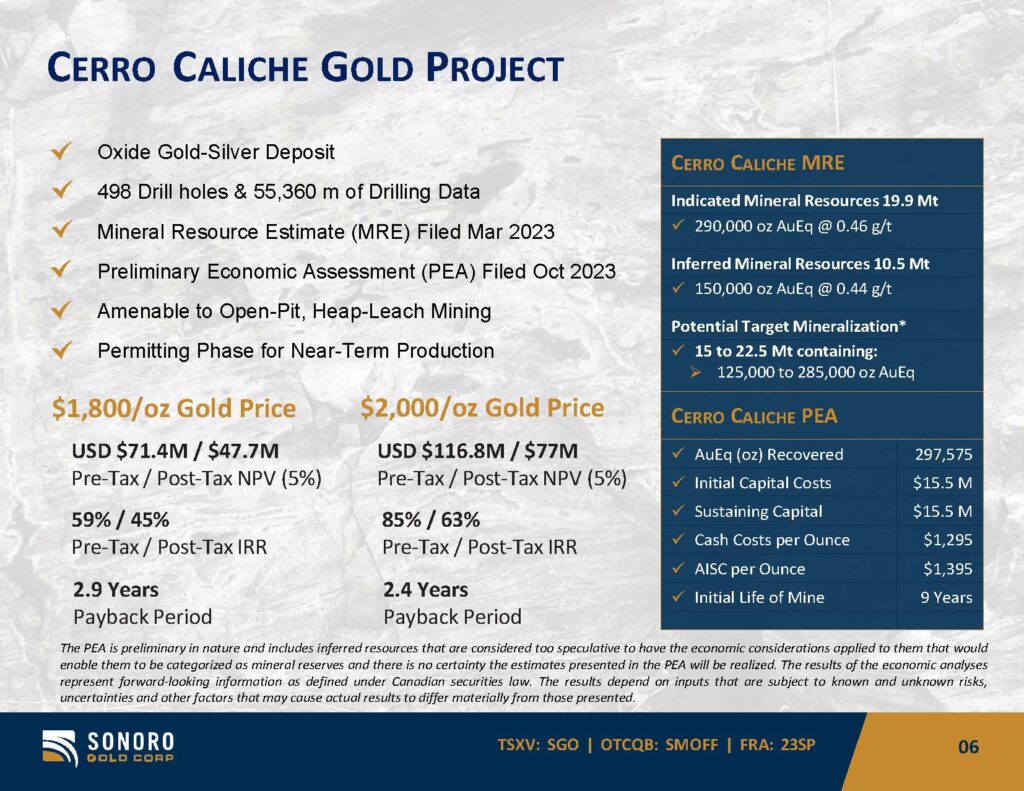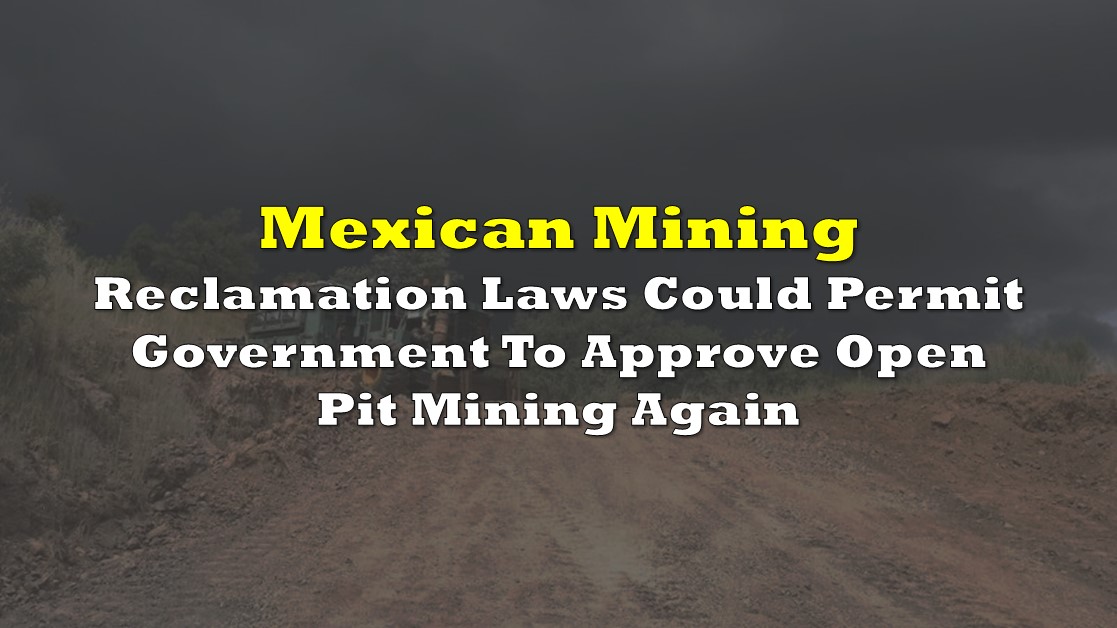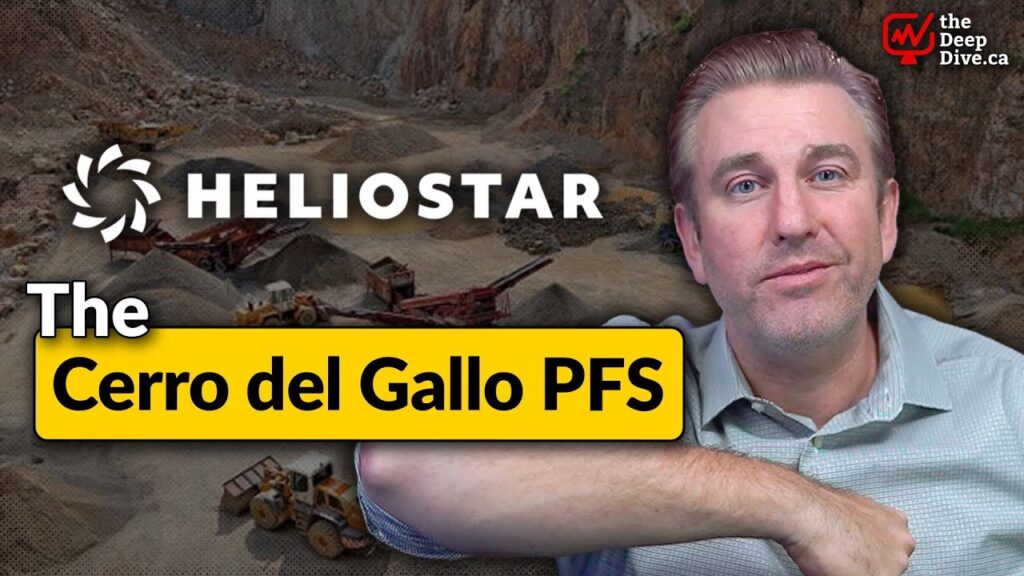FULL DISCLOSURE: This is sponsored content for Sonoro Gold.
Mexico’s first female president, Claudia Sheinbaum, elected in June 2024, faces a pivotal decision on open-pit mining. She took over from close Morena Party ally, President Andres Manuel Lopez Obrador. The Morena Party is generally seen as a left-wing organization, one that is both progressive and populist.
Sheinbaum’s administration is reviewing a 2023 legislative ban on this method of mining, while being tasked with balancing environmental concerns, corporate interests, and social impacts. Unlike her predecessor, Sheinbaum’s conciliatory approach offers hope to mining advocates in resource-rich Sonora, particularly if paired with robust reclamation laws.
Environmental balance
Open pit mining is not without its shortcomings. Environmentalist groups point to the pollution of water sources, deforestation and habitat destruction, alongside soil degradation, as problems often associated with open pit mines, which can lead to the loss of biodiversity.
Although there are environmental challenges, the impact of open-pit mining can be mitigated with proper reclamation efforts. Modern mining regulation and laws are all about requiring mining production companies to put in place reclamation plans to restore lands post-extraction.
So what does that process look like?
Number one, the stabilizing of the site is key. Pits need to be filled, either with waste material – or left as they are if they safely contain water. As well, walls of the pit need to be stabilized by means such as terracing and the planting of vegetation to stop soil erosion.
The handling of residual toxic materials and strong tailings (the fine material left after ore is processed) management must happen, whether with tailing dams, containment ponds or underground disposal methods. This prevents leaching into soils, groundwater and nearby ecosystems, securing the region for future generations.
Most times any soil that was removed during the mining period will need to be replaced and amended with nutrients – organic material, fertilizer, other soil conditioners, in an effort to return the land to as it was prior to mineral extraction. Revegetation with native vegetation (trees, grasses, shrubs, etc.) to restore the local ecosystem and prevent erosion must also be conducted.
Proper environmental monitoring post reclamation involves ongoing – and maybe long-term – monitoring that checks water quality, soil health, plant growth and life recovery. Habitats must be restored and that may mean creating wetlands, forest areas and grasslands that provide shelter, food and nesting grounds. And native species of animals might have to be reintroduced to restore biodiversity.
New open pit mines await approval
Mining developer Sonoro Gold (TSXV: SGO) exemplifies this mining balance. Their flagship asset, Cerro Caliche, is in the final permitting stage for an initial open-pit leap-leaching mine designed to process around 12,000 tonnes of ore per day. The proposed mine has a projected nine year mine life, with the potential to recover 300,000 ounces of gold equivalent over the life-of-mine.
The project boasts a net present value of roughly $71.4 million on a pre-tax basis, and an IRR of nearly 59% if one assumes a US$1,800 per ounce gold price. Cash operating costs are assumed to be about US$1,295 per gold-equivalent ounce.

Only about 30% of the property’s identified mineralized zones have been drilled, with much of the rest remaining unexplored. The property, as described by management, has a “broadly mineralized, low-sulphidation epithermal vein structure,” which makes it highly suitable for open-pit, heap leach extraction.
Located in a mining-rich region, the project promises jobs and leverages existing infrastructure, aligning with Sheinbaum’s potential economic priorities.
Reclamation is more than just a promise
Despite the shortcomings that can be associated with open pit mining, the industry is aware of them. That’s why best practices exist, and have been implemented within the sector.
As part of the initial permitting process, mining companies must submit to government oversight and financial guarantees. It is almost always now a legal requirement that a full reclamation plan is in place before mining starts. Closure certification and compliance comes with government and regulatory agencies making sure environmental restoration is in place.
And to fund reclamation, mining companies must set aside funds, or provide bonds to ensure the company obligation of restoration is ensured. These measures ensure funding for restoration, even if projects fail.
In the case of Sonoro Gold, their current preliminary economic assessment suggests that $2.9 million will be allocated to reclamation costs after the mine has been depleted – meaning the money has already been earmarked to assist in returning the land to its prior state.
A closure plan is in place too. The assessment outlines that both the waste dump and heap leach pad is scheduled to be sloped and revegetated at the end of the mine life, while no tailings pond will exist as a result of the manner in which precious metals are to be extracted from the ore. Sonoro’s closure plan reflects industry best practices, emphasizing accountability.
So while open pit mining may have its shortcomings, Sheinbaum’s administration could leverage strict reclamation laws to revive open-pit mining responsibly. By mandating advance planning and financial commitments, Mexico might reconcile economic growth with environmental stewardship—a critical test for the new president’s progressive agenda.
FULL DISCLOSURE: Sonoro Gold Corp is a client of Canacom Group, the parent company of The Deep Dive. Canacom Group is currently long the equity of Sonoro Gold Corp. The author has been compensated to cover Sonoro Gold Corp on The Deep Dive, with The Deep Dive having full editorial control. Not a recommendation to buy or sell. We may buy or sell securities in the company at any time. Always do additional research and consult a professional before purchasing a security.









